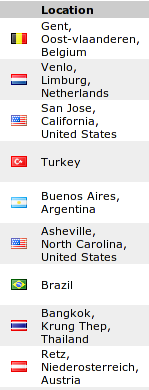As a former future mathematician, it drives me mad when I see an ad that looks like a great opportunity... as long as you don't crunch the numbers.
Not that they are hard to crunch at all, in fact they are pretty much pre-crunched, but consider this one:
Frávega, a large electronics/appliances store is advertising that in november, for one day, EVERYTHING WILL BE FREE.
That's right, for one day in november, they will not charge one cent for anything. Everything has a price tag of $0.
Of course we don't know what day that is. It will be decided randomly after the month ends.
And... ok, and you don't get the money back, you get a voucher for the same amount, and you can use it in Frávega.
So, while this may look like a big promotion, it's actually doubtful Frávega will spend any money whatsoever in it, except the money spent printing the banners.
How much does this cost?
Assuming a random day, and that this campaign brings no new sales whatsoever, it's 1/30th of the monthly sales.
Also, they are not giving you money, they are giving you store credit. Since you can only spend it at Frávega, in reality will be getting a "2x1" deal. You spent in november, got the second one for "free" in december.
So, what is really happening is that 30 people spent, say, $1000 each in an oven, and Frávega has to give them 31 ovens.
That would mean this is the equivalent of a 3.33% discount.
What? A 3.33% discount doesn't sound so appealing? Of course not! They are taking advantage of maths not being intuitive.
So, always keep it in mind: whenever you see numbers in advertising, they are there to convince you to buy. More often than not, it will not be as good a deal as it seems. This is an extraordinary case in that "one day everything for free!" actually means "a 3.33% discount in average for a month!".
BTW: the cost for frávega if you win is more probably less than $600 for a $1000 oven:
Frávega buys two ovens (let's be generous and say they paid $1800 for them?) and gets $1000.
But the $800 deficit goes against earnings tax, which is 35% so $280 come back.
And if they bought the ovens for $900 each, that means $314 are VAT, and since they are selling you two ovens for $1000, there's a VAT refund of $140.
So, those $1000 actually are only $580 after taxes.
This part about taxes can be terribly wrong, though ;-)
